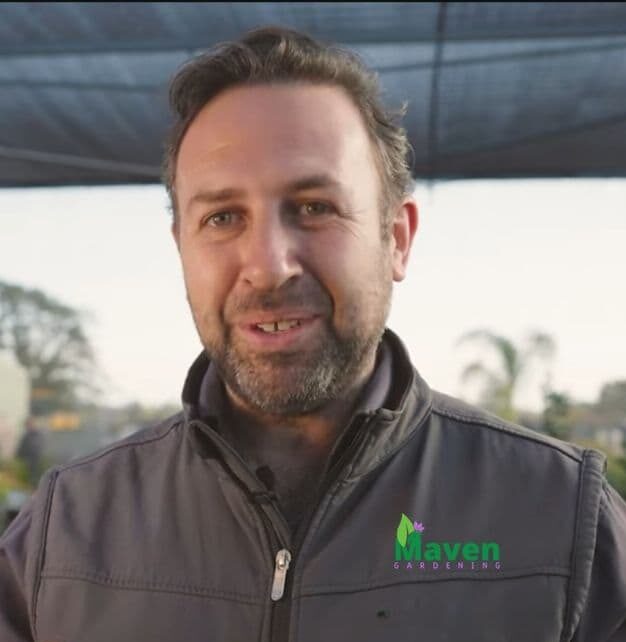Top 10 Hydroponic Mediums: Find the Right Growing Media
Welcome to hydroponics! Whether you’re an old hand or a beginner, the suitable hydroponic growing medium can be game-changing for your indoor garden.
Hydroponics is about growing plants without soil; the medium holds the roots. Here are the top 10 hydroponic growth media for you. Let’s get started!
What is a hydroponic growing medium?
Hydroponic mediums are the materials that hold roots, water, and nutrients. Unlike soil, they don’t supply nutrients but provide hydroponic structure and efficiency.
Why use a hydroponic medium?
Water Storage: Mediums store water well so plants get water consistently.
Air Flow: Proper mediums provide excellent air circulation around the roots, preventing root rot and promoting healthy growth.
pH Control: Many hydroponic mediums are pH-neutral, making it easier to control nutrient solutions.
Clean and Reusable: These are cleaner than soil, and many can be reused if cleaned and sterilized properly.
How do you choose a hydroponic growing medium?
Choosing a medium depends on these things.
Water retention:
- High retention is crucial for DWC
- Low retention is better for aeroponics
Air:
Roots need oxygen. An ideal medium to prevent waterlogging and ensure roots get enough air. Clay pellets are airy.
pH Control:
pH is critical to nutrient uptake. Hydroponic mediums are pH neutral, but the pH of the nutrient solution must be monitored and adjusted as needed.
Cost:
Costs differ greatly. Rockwool is expensive; sand and perlite are cheap.
Reuse:
Hydroponic growth media can be cleaned and reused. Money and waste are saved. Clay pellets and coconut coir are reusable.
Compatibility with Hydroponic Setup:
Not all mediums work for all systems. Rockwool is used for drip, and clay pellets are used for flood and drain.
Top 10 hydroponic planting mediums
Now, look at the top 10 growing mediums for hydroponics, each with pros and cons.
1. Rockwool
Description: Made from basalt rock and chalk, spun into cubes.
Pros:
- Excellent water retention and aeration
- pH-neutral
- Available in various sizes and shapes
Cons:
- Can be expensive
- Requires proper handling to avoid inhaling fibers
Best for: Seed starting and cloning in drip systems.
2. Coconut coir
Description: It’s made from coconut husk, this medium is sustainable and renewable.
Pros:
- High water retention
- Excellent aeration
- Environmentally friendly
Cons:
- It can break down over time
- It needs rinsing to remove salts
Best Use Cases: Suitable for most hydroponic systems, especially ebb and flow and drip systems.
3. Clay Pellets (LECA)
Description: Lightweight Expanded Clay Aggregates (LECA): clay formed into pellets.
Pros:
- Airy
- Reusable. Clean.
- Neutral pH
Cons:
- Expensive.
- Rinse before use.
Best for: Flood and drain, deep water culture, aquaponics.
4. Perlite
Description: It is a lightweight, porous medium created by expanding volcanic glass.
Pros:
- Airy
- Light. Easy to handle.
- Neutral pH
Cons:
- Low water retention
- Can become dusty
Best for: in combination with other mediums for improved water retention, suitable for wick systems.
5. Vermiculite
Description: Vermiculite is a mineral that expands when heated, similar to perlite but with better water retention.
Pros:
- High water retention
- Lightweight and easy to handle
- pH-neutral
Cons:
- Can compress over time, reducing aeration
- It is less reusable than other mediums
Best for: Ideal for seed starting and combined with perlite or coconut coir for better aeration.
6. Oasis Cubes
Description: These foam-like cubes are specifically designed for hydroponic use.
Pros:
- Excellent water retention
- pH-neutral
- Easy to handle and use
Cons:
- Not reusable
- It can be more expensive than other options
Best for: Great for starting seeds and cloning, particularly in drip systems.
7. Peat moss
Description: Peat moss is partially decomposed sphagnum moss.
Pros:
- High water retention
- Ready-available and inexpensive
Cons:
- Not environmentally sustainable
- Can alter pH levels
Best for: Often used in mixes with other mediums for improved water retention. Suitable for various hydroponic systems.
8. Rice hulls
Description: A byproduct of rice milling, rice hulls are lightweight and biodegradable.
Pros:
- Environmentally friendly
- Good aeration
- Cost-effective
Cons:
- Decomposes over time
- Requires rinsing before use
Best for: It can be used with other mediums to improve aeration and water retention and is suitable for most hydroponic systems.
9. Growstones
Description: It’s made from recycled glass; these growstones are porous and lightweight.
Pros:
- Excellent aeration
- Environmentally friendly
- Reusable
Cons:
- It can be not very polite to handle
- Higher cost than other mediums
Best for: Suitable for various hydroponic systems, particularly flood and drain systems.
10. Sand
Description: Simple and readily available, and is a cost-effective medium.
Pros:
- Inexpensive and readily available
- High water retention
Cons:
- Heavy and difficult to handle
- Poor aeration
Best for: Best used in combination with other mediums to improve aeration. Suitable for deep water culture and drip systems.
How do you choose a suitable hydroponic growth media?
Choosing the appropriate hydroponic growth media can significantly impact your plants’ growth and success. Here’s a guide to help you make an informed decision:
Matching medium to your hydroponic system
Different hydroponic systems work best with specific growing mediums:
- Deep Water Culture (DWC): Clay pellets or perlite
- Drip Systems: Rockwool and coconut coir
- Ebb and Flow Systems: Clay pellets and growstones
- Nutrient Film Technique (NFT): Rockwool cubes or Oasis cubes
- Aeroponics: No traditional medium exists, but misting roots can directly use Oasis cubes or Rockwool for seed starting.
Consider plant types
The type of plant you grow also matters:
- Leafy Greens (lettuce, spinach): Lightweight mediums like Perlite or Rockwool.
- Fruiting Plants (tomatoes, peppers): Heavy, water-retaining mediums like coconut coir or peat moss.
- Herbs (basil, mint): Versatile options like coconut coir or clay pellets.
Balancing cost and performance
Some mediums may perform better but are more expensive. Consider your budget and cost-effectiveness:
- Budget-friendly: Sand, perlite, and rice hulls.
- High-performance: Rockwool, clay pellets, and growstones.
- Eco-friendly: Coconut coir, rice hulls.
How do use hydroponic planting mediums?
Using hydroponic planting mediums correctly requires some do’s and don’ts for optimal plant health and growth:
Preparation and conditioning
- Rinse thoroughly: Always rinse your medium before use to remove dust and impurities. This is especially true for clay pellets and perlite.
- pH Adjustment: Some mediums, like rockwool, must be soaked in pH-adjusted water before use to be neutral.
Maintenance and cleaning
- Regular Check: Check your medium for mold, algae, or pests. Keeping your medium clean prevents diseases.
- Sterilization: For reusable mediums like clay pellets, sterilize between uses to remove pathogens. Using hydrogen peroxide solution will accomplish this.
Recycling and Reusing Mediums
- Reusability: Mediums like clay pellets, growstones, and coconut coir can be reused after cleaning. Don’t reuse organic mediums like peat moss and rice hulls, as they break down over time.
- Waste Reduction: Reusing your medium reduces waste and is more cost-effective in the long run.
Common Mistakes to Avoid
Even seasoned gardeners make mistakes with hydroponic growing mediums. Here are some to avoid:
Over or underwatering
Balance is Key: Each medium holds water differently. Adapt your watering method according to your medium.
Ignoring pH Levels
Even if your medium is pH balanced, the nutrient solution’s pH will change. Test and adjust pH for nutrient absorption.
Wrong mediums
System compatibility: Choose a medium compatible with your hydroponic system. For example, a drainage medium in a flood and drain system can be used to prevent root rot.
Finale
Choosing a suitable hydroponic growing medium is everything. Each medium has pros and cons: water retention, aeration, pH, cost, and system compatibility. By understanding these factors and the characteristics of each hydroponic medium, you can make an informed decision that will help your plants thrive. Happy growing!
Hydroponic growing mediums FAQ
What’s a suitable medium for a beginner?
Coconut coir. Easy to use, effective water retention, and eco-friendly.
Can I mix different hydroponic growth media?
It is possible to balance water retention and aeration by mixing perlite and vermiculite.
How often do I replace my medium?
A medium’s replacement frequency varies. For example, clay pellets can be reused multiple times, while peat moss may need replacing after each growing cycle.
What’s the cheapest medium?
Sand and perlite. It is cheap and available but may need to be mixed with others.
How do I dispose of used hydroponic medium safely?
Most hydroponic mediums can be used in your garden or compost if they are not chemically treated. Always check local disposal regulations to ensure proper handling.

Meet Milan Cole, your urban gardening pro!
Milan Cole, chief content writer at Maven Gardening and an urban gardening expert, is passionate about helping city dwellers cultivate their green thumbs. Armed with extensive horticultural knowledge, Milan provides practical advice for overcoming urban gardens’ challenges, like limited space, water scarcity, and reduced sunlight.
His expertise extends beyond traditional methods, encompassing innovative approaches like hydroponic and aquaponic systems and sustainable gardening practices. Milan skillfully adapts these techniques to urban environments, considering factors like pollution and climate change.
In his clear and concise writing, Milan offers actionable solutions for anyone wanting to bring life to an urban space. He shares valuable insights into growing herbs in tight spaces, maximizing the potential of window boxes, and transforming even the most miniature balconies into thriving green oases.
Milan’s guidance is straightforward and practical, making it ideal for anyone looking to cultivate their own urban garden, regardless of prior experience.
Join Milan Cole on your journey to metropolitan Eden!





